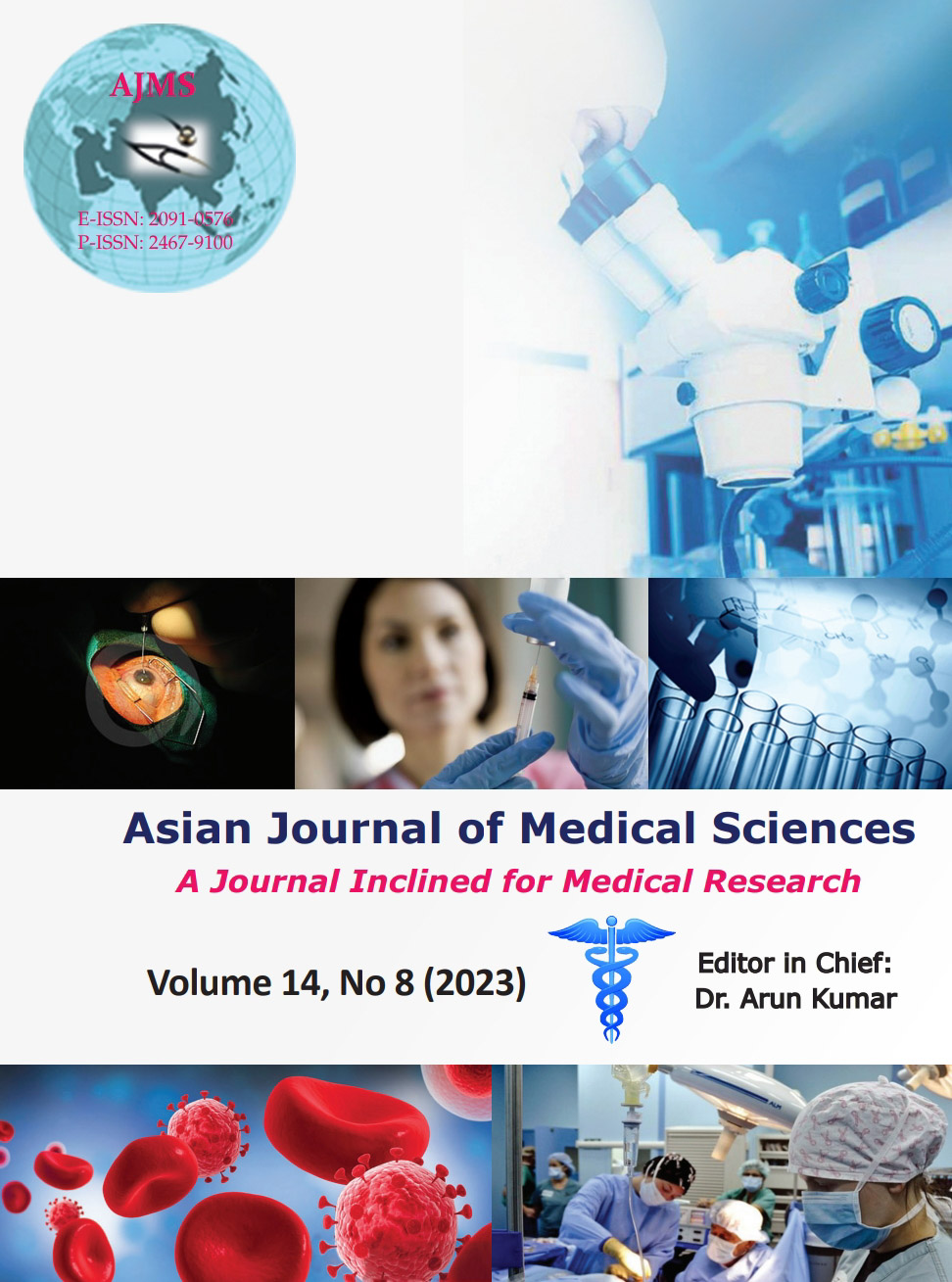Impact of lag time on lung function impairment in pulmonary tuberculosis sequelae patients – A cross-sectional study
Keywords:
Pulmonary tuberculosis; Chronic disease spirometry; Respiratory function test; Antitubercular agentsAbstract
Background: Treatment completed pulmonary tuberculosis (PTB) patients are often left with permanent pulmonary function impairment. Lag time remains a major factor in determining the severity of the sequelae.
Aims and Objectives: This study aims to assess the impact of lag time on PTB sequelae.
Materials and Methods: A cross-sectional study was conducted during July 2019–December 2020. A total of 85 patients presenting with clinicoradiological features of PTB sequelae were recruited for the study and spirometry and diffusion capacity of lungs (DLCO) were done. They were divided into study groups based on lag time. The lag time (in days) was considered as primary explanatory variable. One-way ANOVA and Chi-square tests were used. coGuide V.1.0 was used for statistical analysis.
Results: The mean lag time was 52.94 days in the study population. The mean duration of after treatment was 15.45 years in the study population. There was a statistically significant difference across study groups (classified based on the lag time) in lung function such as FVC%, FEV1, FEVI/FVC, MEF, DLCO, and duration of after treatment (P<0.05).
Conclusion: The lag time from the development of symptom to the diagnosis of the disease has a significant impact on lung function impairment in PTB sequelae patients since the increase in lag time increases the severity of lung function impairment. Early identification and treatment may help in reducing the progression of lung function impairment.
Downloads
Downloads
Published
How to Cite
Issue
Section
License
Copyright (c) 2023 Asian Journal of Medical Sciences

This work is licensed under a Creative Commons Attribution-NonCommercial 4.0 International License.
Authors who publish with this journal agree to the following terms:
- The journal holds copyright and publishes the work under a Creative Commons CC-BY-NC license that permits use, distribution and reprduction in any medium, provided the original work is properly cited and is not used for commercial purposes. The journal should be recognised as the original publisher of this work.
- Authors are able to enter into separate, additional contractual arrangements for the non-exclusive distribution of the journal's published version of the work (e.g., post it to an institutional repository or publish it in a book), with an acknowledgement of its initial publication in this journal.
- Authors are permitted and encouraged to post their work online (e.g., in institutional repositories or on their website) prior to and during the submission process, as it can lead to productive exchanges, as well as earlier and greater citation of published work (See The Effect of Open Access).




